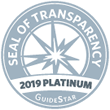TPO antibody titers were detected in 22 women, who were included in all analyses. The average TSH of the children (53% male) was 1.2 mIU/L and 4 children had a TSH >5 mIU/L. Serum analyses showed detectable maternal levels of seven PFAs in >80% of the samples, with perfluorooctane sulfonate (PFOS) having the highest levels (average 8.03 ng/ml). Of the OCs, there were measurable levels of eight polychlorinated biphenyls (PCBs) and four pesticides in >80% of the maternal serum samples. The mother’s TSH concentrations were directly related to the concentrations of most PFAs and OCs—the higher the POP level, the higher the TSH, suggesting a decrease in the mother’s thyroid function due to the POP exposure. The four children with subclinical hypothyroidism (TSH >5 mIU/L) were born to mothers in the highest levels of TSH concentrations and PFOS exposure. In the full group, no significant associations existed either between maternal POP and infant serum TSH concentrations or between maternal POP concentrations and thyroid function with birth outcomes.
WHAT ARE THE IMPLICATIONS OF THIS STUDY?
In this Norwegian mother–child paired study of maternal exposures to primarily PFAs and OCs, there were direct associations between pollutant exposures to the mother and a mild decrease in the mother’s thyroid function. However, no associations were found between pollutant exposures to the mother, infant serum thyroid function at 3 days of age, and birth outcomes (birth weight, head circumference, and length).
— Alan P. Farwell, MD

ATA THYROID BROCHURE LINKS
Thyroid and Pregnancy: http://www.thyroid.org/thyroid-disease-pregnancy/
Hypothyroidism: http://www.thyroid.org/hypothyroidism/




